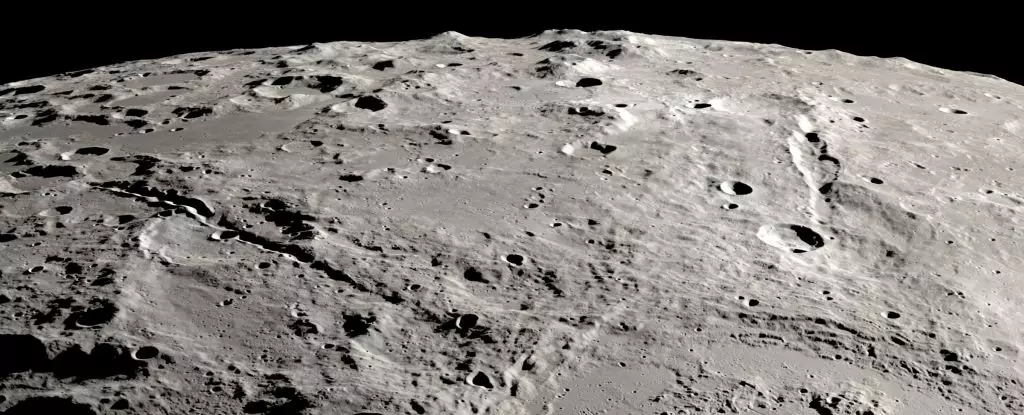For centuries, the Grand Canyon has captivated explorers and scientists alike with its grandeur and geological history forged by the relentless force of the Colorado River over millions of years. However, Earth is not the only celestial body adorned with impressive geological formations. The Moon, our enigmatic neighbor in the Solar System, also harbors spectacular canyons, raising fascinating questions about their formation. Unlike Earth’s canyons, which owe their existence to liquid water and erosion over eons, the origins of lunar canyons remain shrouded in mystery, particularly in an environment devoid of liquid water. Recent studies have shed light on these formations, leading scientists to propositions about their rapid and violent inception.
At the heart of this investigation is the discovery that two significant canyons on the Moon, named Vallis Schrödinger and Vallis Planck, were likely formed in a matter of minutes following a colossal impact event. These lunar gorges are situated near the Moon’s south pole, branching out from the Schrödinger crater. Vallis Schrödinger measures an astonishing 270 kilometers (168 miles) in length and plunges 2.7 kilometers deep, while Vallis Planck stretches 280 kilometers long and reaches a depth of 3.5 kilometers. For comparison, the Grand Canyon is lengthier at 446 kilometers but not as deep, at 1.86 kilometers. The genesis of these canyons is attributed to ejecta rays, formations created when debris is hurled from an impact.
The research team led by planetary scientist David Kring embarked on a meticulous journey to unearth the intricacies of how these lunar canyons were sculpted. Utilizing high-resolution photographs of the lunar surface, they devised detailed maps outlining the trajectories and dispersion patterns of the ejecta expelled during the formation of the Schrödinger crater. Through a technique known as reverse engineering, they reconstructed the dynamics of the impact event, allowing them to visualize how the ejecta were spread across the Moon’s surface. Their findings revealed a striking asymmetry in the fallout, with the majority of material being expelled away from the lunar south pole at speeds ranging from 0.95 to 1.28 kilometers per second.
To grasp the magnitude of such an impact, researchers calculated the energy released during this event, estimating it to be approximately 130 times that of the entire nuclear arsenal globally. This revelation underscores not only the ferocity of cosmic collisions but also the volatility of early solar system dynamics. With implications that carry far beyond mere interest, understanding these ancient collisions can shed light on the Moon’s construction and evolution.
Implications for Future Lunar Missions
Excitingly, the upcoming Artemis III lunar mission is set to explore this very region of the Moon in 2027, with plans to land near the south pole. While the exact landing site is yet to be determined, the research has provided a glimmer of good news for lunar explorers. The ejecta patterns suggest that much of the cosmic debris is found away from the potential landing areas, increasing access to ancient minerals crucial for understanding the Moon’s geological history. Thus, rather than presenting a threat to astronauts, the remnants of the Schrödinger impact could reveal untold stories about the Moon’s past.
As humanity prepares for renewed exploration of the Moon, the findings regarding Vallis Schrödinger and Vallis Planck highlight the dynamic relationship between celestial events and geological formations. These ancient canyons are more than just fascinating sights; they provide essential context for understanding the Moon’s history and the forces that shaped it. The forthcoming Artemis III mission holds promise for further illuminating these mysteries, potentially altering our perceptions of both our lunar companion and the universe around us. In the end, the study of these vast canyons serves not only as a testament to the Moon’s volatility but also as a pivotal chapter in humanity’s quest for knowledge of the cosmos.


Leave a Reply